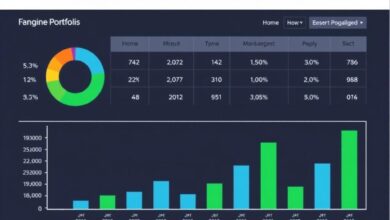What are bonds and how to invest in them

Consider allocating a portion of your portfolio to corporate and government securities, as they offer predictable income streams and fixed returns. Corporate instruments can provide attractive yields, especially from well-rated companies, while government-issued securities are often seen as the bedrock of safety in turbulent times.
A strategic approach involves diversifying across various maturities and credit qualities. Short-term government notes typically carry lower yields but come with reduced risk, making them a sound choice for conservative investors. Conversely, long-term corporate offerings might yield higher returns but entail greater exposure to market fluctuations.
To enhance your financial strategy, regularly evaluate interest rate trends and economic indicators that could influence bond prices. Utilizing tools such as bond ladders can help mitigate interest rate risk by staggering maturity dates, allowing you to take advantage of varying rates over time. This method not only stabilizes cash flow but also positions your portfolio to respond effectively to changing market conditions.
Types of Bonds Explained
Government securities offer a reliable way to achieve safety with a fixed return. These instruments are backed by the full faith and credit of the issuing government, making them ideal for conservative investors seeking stable income.
Municipal bonds, issued by local governments or agencies, provide tax advantages. Interest earned is often exempt from federal taxes and sometimes state taxes, enhancing overall returns for residents in high-tax states.
Corporate bonds present an opportunity for higher yields compared to government options. By investing in these debt instruments, one can diversify their portfolio while taking on varying degrees of risk based on the issuer’s creditworthiness. High-yield (or junk) corporate bonds can deliver substantial income but come with increased risk of default.
Treasury Inflation-Protected Securities (TIPS) serve as a hedge against inflation. The principal value adjusts with inflation, ensuring that purchasing power remains intact over time while providing fixed interest payments.
Convertible bonds allow investors to convert their holdings into equity under specified conditions. This feature provides potential upside if the underlying stock performs well, combining the stability of fixed income with growth opportunities.
Selecting the right type requires careful consideration of risk tolerance, income needs, and market conditions. Each category serves distinct objectives and should align with individual financial goals.
Assessing Bond Risk Levels
Evaluate the safety of securities by examining credit ratings from agencies like Moody’s, S&P, and Fitch. High-grade government issues typically present lower risk compared to corporate debt, which may vary significantly based on the issuer’s financial health.
Consider interest rate fluctuations. Long-term obligations are more sensitive to these changes, leading to potential price volatility. Shorter maturities generally offer greater stability but lower yields.
Analyze the economic environment. Economic downturns can affect corporate earnings, increasing default risks for corporate issues. Government securities often maintain value as they are backed by state resources.
Review specific bond features such as call provisions that allow issuers to redeem bonds early, impacting returns. Convertible options enable bondholders to exchange bonds for equity under certain conditions, adding a layer of complexity.
Monitor inflation rates, as rising inflation erodes purchasing power and can diminish fixed income returns from long-term instruments. Inflation-protected securities (TIPS) offer a safeguard against this risk.
Diversification is key; spreading investments across various types minimizes exposure to any single entity or economic sector. This approach balances risks between safer government securities and potentially higher-yielding corporate offerings.
Stay informed about geopolitical factors influencing market sentiment. Events affecting major economies can lead to sudden shifts in bond prices and yields, impacting your portfolio’s overall risk profile.
Evaluating Yield and Returns
Focus on the yield to maturity (YTM) as a primary metric for assessing potential income from corporate and government securities. YTM reflects the total return expected if the bond is held until maturity, taking into account interest payments and any capital gains or losses.
Calculate current yield by dividing annual coupon payments by the bond’s market price. This provides a snapshot of income relative to investment cost, essential for comparing various fixed-income options.
Consider the impact of interest rate fluctuations on bond prices. When rates rise, existing bonds typically decrease in value, affecting overall returns. Assessing duration can help gauge sensitivity to these changes; longer durations imply greater risk but often higher yields.
Evaluate credit ratings from agencies like Moody’s or S&P to understand safety levels associated with different issuers. Higher-rated corporate bonds generally offer lower yields compared to government securities but carry less risk of default.
Monitor economic indicators that influence yield curves. A steep curve may signal strong growth expectations, impacting both corporate profitability and government borrowing costs, while an inverted curve could indicate recession risks, necessitating adjustments in portfolio strategy.
Incorporate diversification across various types of debt instruments to balance risk and return potential effectively. Mixing high-yield corporate bonds with stable government issues can optimize income while maintaining adequate safety in volatile markets.
Diversification with Bonds
Integrate a mix of government and corporate securities to enhance safety in your portfolio. Government bonds typically offer lower risk but provide stability, while corporate options can yield higher returns at an increased risk level. Allocate funds across various sectors and credit ratings to mitigate potential losses.
Consider diversifying by maturity dates as well. Short-term securities usually offer less volatility, whereas long-term ones may present opportunities for greater fixed returns. A laddering strategy, where bonds mature at staggered intervals, can help manage interest rate fluctuations effectively.
Incorporate international bonds to further spread risk. Currency variations can impact returns but also provide a hedge against domestic market downturns. Evaluate the political and economic stability of issuing countries to assess risk exposure.
Regularly review your bond portfolio’s performance against market conditions and adjust allocations accordingly. This proactive approach ensures alignment with your financial goals while maintaining a balanced risk-reward profile.
Timing Your Bond Investments
Investing at optimal moments can significantly enhance your returns. Focus on these key strategies:
-
Economic Indicators:
- Monitor interest rate trends, as rising rates typically lead to falling bond prices.
- Assess inflation data; high inflation often erodes fixed returns from government and corporate securities.
-
Market Sentiment:
- Follow investor sentiment; fear can drive bond prices higher, particularly in uncertain times.
- Be aware of geopolitical events that might affect government bonds’ safety and yield.
-
Cyclical Trends:
- Understand economic cycles. Bonds tend to perform better during downturns when equities falter.
- Consider seasonal patterns in bond markets that could influence timing decisions.
-
Laddering Strategy:
- Create a ladder by staggering maturity dates, allowing you to reinvest at potentially higher rates over time.
- This approach provides both liquidity and the ability to capitalize on changing interest rates.
Incorporating these tactics can lead to more favorable outcomes in your portfolio. Regularly review market conditions and adjust your approach accordingly for sustained success with fixed return assets. Consider diversification among various types of securities to mitigate risks associated with timing errors.







